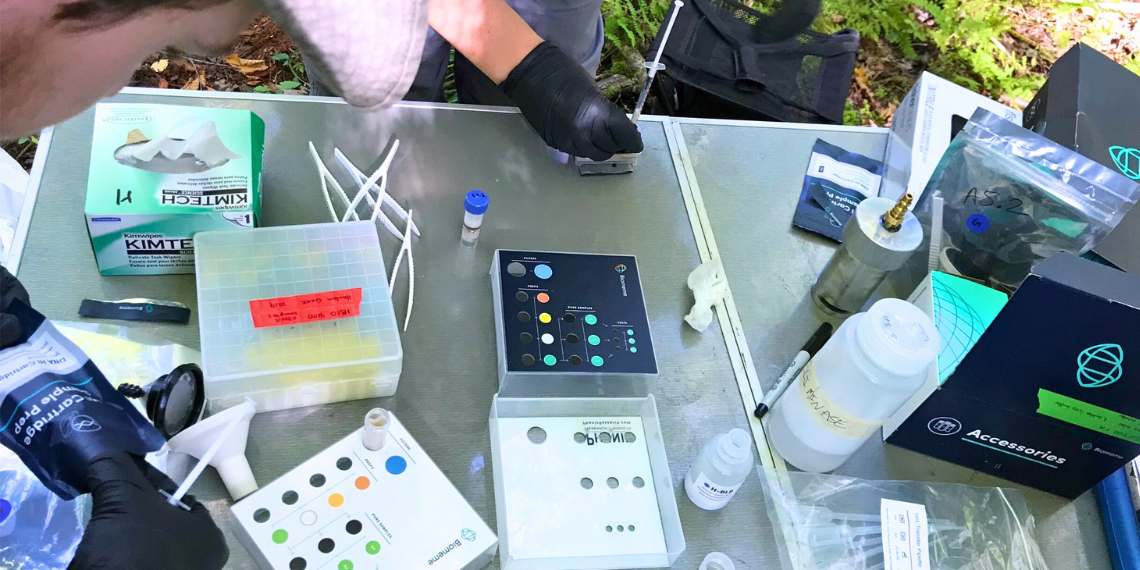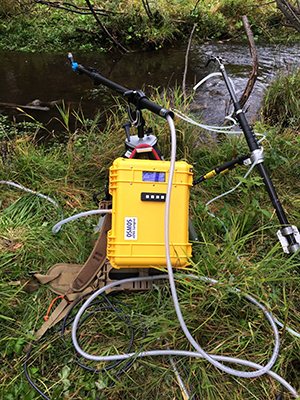Environmental DNA as a Gateway to Research Experience

Imagine if all students were given the opportunity to gain authentic research experience entirely through their coursework, without having to take on an extra time commitment on top of their academics and other responsibilities. A group of instructors and researchers in the Department of Integrative Biology are finding new ways to make this happen.
In a recent article published in the journal Genome, lead author and PhD candidate Kathleen Nolan highlights the value of using environmental DNA as a way to provide biology students with these valuable opportunities.
“By offering real, hands-on research experiences in a course setting, we can make these opportunities both scalable and more accessible to students,” says Nolan.
Many undergraduates can learn to develop and test hypotheses through lab internships and 4th year honours projects, where they are individually mentored by a faculty member. However, embedding similar learning experiences into courses allows an even greater number of students to benefit from this type of experiential learning.

An eDNA autosampler collects samples in the field.
What makes environmental DNA – often shortened to eDNA – such an ideal topic for course-based research experience? eDNA is shed by organisms into their surrounding environment from decay, waste, and other means. It has become a useful tool to study the biodiversity in an ecosystem and can even identify the presence of rare species that may otherwise be unobserved. While its use in research is most well established in fish, biologists are rapidly adopting it in the study of other species, particularly since eDNA can now be captured from soil and air as well as water.
And perhaps most importantly, as methods of analyzing eDNA grow increasingly simpler, it becomes more practical for individuals with less laboratory experience – such as undergraduate students – to use the technology.
Nolan and colleagues showcase three case studies where students developed and carried out their own research projects related to eDNA. These projects took on many forms, depending on student interests and the resources available to them. Projects ranged from an in-depth literature review to field work-based investigations. For example, one group of students compared the efficacy of an eDNA collection method designed to be used by ‘citizen scientists’ against a more standard collection method used by researchers.
“In two of the three projects, the research conducted by the students has led to journal publications, while a manuscript from the third project is in preparation,” says Nolan, highlighting the impact of the research conducted by the students.
Student reflections showed that they benefitted in more ways than one from the experience. For example, several students expressed how much they valued the unexpected transferable skills that they gained, such as different types of communication skills. In addition to publishing their work, several students also attended scientific conferences and industry events related to their project where they had the opportunity to network with professionals. Many students also gained experience with budgeting and applying for research bursaries to fund their project.
There were also longer-term personal impacts on project participants. Several students noted how much the experience increased their confidence. One student, noting her personal struggles with anxiety, found the experience helpful in learning how to deal with anxiety in a professional setting.
But students weren’t the only ones who benefitted from the experience. Faculty who taught courses of this kind reported feeling “rewarded, fulfilled, and academically stimulated.” These courses create a win-win situation where students gain skills and knowledge while faculty are able to integrate their teaching and research endeavours into one.

Brook trout
In their article, Nolan and colleagues provide a ‘roadmap’ to help instructors integrate eDNA-based research into undergraduate courses that also includes strategies for overcoming potential hurdles. One such hurdle is the cost of sequencing eDNA, but, as demonstrated by Nolan’s case studies, a successful approach to overcome this barrier is applying for student research bursaries to help offset lab costs.
“Many novel biological questions can be answered with eDNA, and the questions can be highly customized based on the local context and interests,” adds Nolan. “eDNA offers a great way to increase student access to high impact research experiences and should be expanded in undergraduate biology programs.”
Read the full study in the journal Genome.
Read about other CBS Research Highlights.